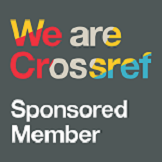Evaluating Teaching Material Needs for Active Adults in West Java: A Study on Cholesterol, Blood Sugar, and Uric Acid Examinations
DOI:
https://doi.org/10.30994/jnp.v7i2.568Keywords:
blood glucose, cholesterol, health security, health promotion, uric acidAbstract
Background: West Java is the province with the highest number of productive age population in Indonesia. The productivity of this age group is significantly influenced by health and education factors, with health teaching materials serving as educational tools. Among the challenges that hinder the productivity of active adults, chronic disease poses a significant threat.
Purpose: This study aimed to describe the cholesterol, blood sugar, and uric acid examinations in active adults, including the need for health teaching materials.
Method: The sampling method used was purposive sampling, with inclusion criteria being active adults aged 18 to 60 years, who work or study at an educational institution in Bandung Regency. Meanwhile, adults with mental illness were excluded, resulting in a sample size of 70 participants. The method for checking cholesterol, blood sugar, and uric acid used a Glucose Cholesterol Uric acid (GCU) meter.
Results: The results showed that 12 adults had high cholesterol levels, while 6 had elevated blood sugar and uric acid levels. In the young age group (aged 18-44 years), 2 adults experienced hypercholesterolemia. The most sought-after teaching material for chronic disease was preventing sugar intake in soft drinks and the benefits of enhancing a healthy lifestyle through education. Furthermore, establishing prevention programs in educational institutions is an essential requirement to prevent the development of chronic and safeguard the productivity of active adults.
Conclusions: Based on the results, it was recommended that productive and active adults receive training in chronic disease awareness and facilitate regular general check-ups (GCUs). This proactive approach was expected to contribute to the development and health security of the country.
Downloads
References
Drewnowski, A., & Rehm, C. D. (2016). Sources of caffeine in diets of US children and adults: Trends by beverage type and purchase location. Nutrients, 8(3). https://doi.org/10.3390/nu8030154.
Grimani, A., Aboagye, E., & Kwak, L. (2019). The effectiveness of workplace nutrition and physical activity interventions in improving productivity, work performance and workability: A systematic review. BMC Public Health, 19(1), 1–12. https://doi.org/10.1186/s12889-019-8033-1.
Kemenkes RI. (2019). Indonesia Health Profile 2018. In Profil Kesehatan Provinsi Bali.
Lee, J. Y., Park, H. A., & Min, Y. H. (2015). Transtheoretical Model-based Nursing Intervention on Lifestyle Change: A Review Focused on Intervention Delivery Methods. Asian Nursing Research, 9(2), 158–167. https://doi.org/10.1016/j.anr.2015.05.001.
Nohara, Y., Kai, E., Ghosh, P. P., Islam, R., & Ahmed, A. (2015). Health Checkup and Telemedical Intervention Program for Preventive Medicine in Developing Countries : Verification Study Corresponding Author : 17, 1–15. https://doi.org/10.2196/jmir.3705.
Sakurai, M., Nakamura, K., Miura, K., Takamura, T., Yoshita, K., Nagasawa, S. Y., Morikawa, Y., Ishizaki, M., Kido, T., Naruse, Y., Suwazono, Y., Sasaki, S., & Nakagawa, H. (2014). Sugar-sweetened beverage and diet soda consumption and the 7-year risk for type 2 diabetes mellitus in middle-aged Japanese men. European Journal of Nutrition, 53(1), 251–258. https://doi.org/10.1007/s00394-013-0523-9.
Singh, M., Abdulrahman, S., & Rashid, A. (2018). Assessment of oral health status and associated lifestyle factors among Malaysian Fishermen in Teluk Bahang, Penang: An analytical cross-sectional study. Indian Journal of Dental Research, 29(3), 378–390. https://doi.org/10.4103/ijdr.IJDR_545_17.
Tahmassebi, J. F., & BaniHani, A. (2020). Impact of soft drinks to health and economy: a critical review. European Archives of Paediatric Dentistry, 21(1), 109–117. https://doi.org/10.1007/s40368-019-00458-0.
Weishaupt, I., Mages-Torluoglu, J., Kunze, C., Weidmann, C., Steinhausen, K., & Bailer, A. C. (2022). Mobile Digital Health Intervention to Promote Nutrition and Physical Activity Behaviors Among Long-term Unemployed in Rural Areas: Protocol for a Randomized Controlled Trial. JMIR Research Protocols, 11(11), e40321. https://doi.org/10.2196/40321.
Zenone, M., Silva, D., Smith, J., & Lee, K. (2021). How does the British Soft Drink Association respond to media research reporting on the health consequences of sugary drinks? Globalization and Health, 17(1), 1–9. https://doi.org/10.1186/s12992-021-00719-y.
Zhang, X., Coker, O. O., Chu, E. S. H., Fu, K., Lau, H. C. H., Wang, Y. X., Chan, A. W. H., Wei, H., Yang, X., Sung, J. J. Y., & Yu, J. (2021). Dietary cholesterol drives fatty liver-associated liver cancer by modulating gut microbiota and metabolites. Gut, 70(4), 761–774. https://doi.org/10.1136/gutjnl-2019-319664.
Downloads
Published
How to Cite
Issue
Section
License
Copyright (c) 2024 Journal Of Nursing Practice

This work is licensed under a Creative Commons Attribution-NonCommercial-ShareAlike 4.0 International License.

This work is licensed under a Creative Commons Attribution-NonCommercial-ShareAlike 4.0 International License.






















